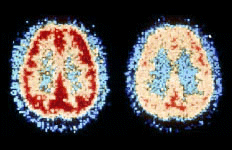Behavioral Aspects of Addiction
Addiction is the obsessive-compulsive desire to consume a substance to reach a state of enhanced pleasure regardless of health consequences. Addiction is a behavior dictated by conscious and unconscious mental emotional components. Consciously the addicted person feels that he is unable to cope with stressful circumstances in his life and wants to avoid them. The addict may be a pleasure seeker and may not have developed skills to move through difficulties. He may have learnt during his childhood to cope with stress with substance abuse modeling his friends or family. The substance abuser cannot cope with feelings of failure and/or does not have the resources or the hardiness to fight. He is usually unaware of his belief system.
Biochemical Aspects of Addiction
The inner mechanisms and the physiology of addiction are the same regardless of the substance abused. The abused substance interferes with the normal production of dopamine in the pleasure center of the brain. Nature has associated pleasure with sex and food for survival purpose. Pleasure is Nature’s way of tricking us into playing her divine game of survival. Some substances can increase the release of dopamine to more than 600 times the normal production and create a much higher pleasure than Nature can give us. When the brain experiences this amount of pleasure it wants to go back there again and again and there is the start of dependence and substance abuse.
Health Consequences of Addiction
Substance abuse and heightened pleasure come with tremendous consequences on health varying with the specific substance abused. For instance, a tobacco addiction may lead to respiratory problems such as emphysema and lung cancer, while methamphetamine abuse may lead to mental disorders or illness such as sleep disturbance and paranoia or schizophrenia. Alcohol, pharmaceutical drugs such as pain killers, tobacco, marijuana, methamphetamines, heroin, and cocaine may all be overused in a compulsive manner and lead to addiction.
Drugs are Neurotoxic
Chronic drug use deeply affects the brain and creates addiction. For instance, methamphetamine is a potent neurotoxin shown to cause dopaminergic degeneration. When dopamine breaks down it produces reactive oxygen species such as hydrogen peroxide. It is likely that the oxidative stress that occurs after taking methamphetamine mediates its neurotoxicity.
Drugs Destroy Neurons and Affect Brain Capacity
When the neurons get destroyed the natural neurotransmitter does not get synthesized properly in the right amount. The brain then sends signals that it needs the chemical for its proper function. This signal is experienced mentally as a craving, the strong urge to get that substance that the brain cannot manufacture properly anymore.
Heal the Brain with Proper Nutrition
The starving brain signals that it is deficient in the neurotransmitter that was replaced by an external mimicker. Chronic drug abuse affects deeply some parts of the brain, but the MRI of a recovering drug addict shows that the brain can recover. It takes about a year for the brain of a cocaine addict to look like a normal brain.
Commonly abused substances include:
- Opiates and narcotics are powerful painkillers that cause drowsiness (sedation) and feelings of euphoria. These include heroin, opium, codeine, meperidine (Demerol), hydromorphone (Dilaudid), and Oxycontin.
- Central nervous system stimulants include amphetamines, cocaine, dextroamphetamine, methamphetamine, and methylphenidate (Ritalin). Caffeine and nicotine are the most commonly used stimulants. These drugs have a stimulating effect, and people can start needing higher amounts of these drugs to feel the same effect (tolerance).
- Central nervous system depressants include barbiturates (amobarbital, pentobarbital, secobarbital), benzodiazepine (Valium, Ativan, Xanax), chloral hydrate, and paraldehyde. The most commonly used, by far, is alcohol. These substances produce a soothing sedative and anxiety-reducing effect and can lead to dependence.
- Hallucinogens include LSD, mescaline, psilocybin (“mushrooms”), and phencyclidine (PCP or “Angel Dust”). They can cause people to see things that aren’t there (hallucinations) and can lead to psychological dependence.
- Tetrahydrocannabinol (THC) is the active ingredient found in marijuana (cannabis) and hashish. Although used for their relaxing properties, THC-derived drugs can also lead to paranoia and anxiety.
People may become high on drugs or overdose by accident or on purpose.
Drug withdrawal symptoms can occur when a person stops or reduces their use of a substance. Withdrawal symptoms vary, depending on the abused substance. When withdrawal symptoms begin depends on the length of time the drug normally stays within the body. Drug intoxication, overdose, and withdrawal can sometimes be life-threatening.
1. Opiates and Narcotics
Opiate addiction is recognized as a central nervous system disorder caused by continuous opiate intake. After prolonged opiate use, the nerve cells in the brain, which would otherwise produce endogenous opiates (Natural pain killer or endorphins), cease to function normally. The body stops producing endorphins because it is receiving opiates instead. The degeneration of these nerve cells causes a dependency to an external supply of opiates. Abrupt or sudden abstinence of opiates causes withdrawal symptoms
Opiate dependency is a physical illness involving a central nervous system disorder caused by long term opiate intake.
Symptoms of opiate and narcotic use:
- Needle marks on the skin in some cases (called “tracks”)
- Scars from skin abscesses
- Rapid heart rate
- Small pupils (pinpoint)
- Relaxed and/or euphoric state (“nodding”)
- Coma, respiratory depression leading to coma, and death in high doses
Symptoms of opiate and narcotic withdrawal:
- Anxiety and difficulty sleeping
- Sweating
- Goose bumps (piloerection)
- Runny nose (rhinorrhea)
- Stomach cramps or diarrhea
- Enlarged (dilated) pupils
- Nausea and vomiting
- Excessive sweating
- Increase in blood pressure, pulse, and temperature
2. Central Nervous System Stimulants
Example: Cocaine
Symptoms of cocaine use:
- Exaggerated feeling of well-being (euphoria)
- Dilated pupils
- Fast heart rate
- Restlessness and hyperactivity
Symptoms of cocaine withdrawal:
- Fatigue and malaise
- Depression
- Very clear and unpleasant dreams
Example: Caffeine
Caffeine is a psycho active stimulant drug for humans and animals and is a bitter white crystalline Xanthine alkaloid. German scientist Friedrich Ferdinand Runge in the year 1989 discovered ‘kaffeine’ which stands for ‘caffeine’ in English.
The term caffeine has various faces when found in various materials. Like when found in guarana called as guaranine, mateine when found in mate, theine when found in tea. All these terms have same chemical and physical properties. Caffeine is again found in very commonly used things like, beans, leaves, fruit and many plants where it plays the role of pesticides.
Coffee, tea, soft drinks, enjoys drinks which gives enjoyment but damages slowly the body and creates addiction for it.
Overdose of caffeine result the following deadly things:
- Anxiety
- Sleeping disorders and drowsiness
- Memory and learning disturbances
- Heart problem
- Effect on pregnancy
- Insomnia
- Headache
- Respiratory problem
- Nervousness
- Peptic ulcers
Caffeine is a central nervous system and metabolic stimulant and is used both recreationally and medically to reduce physical fatigue and restore mental alertness. Caffeine is the mostly used legal psycho active substance.
3. Central Nervous System Depressants
Example: Alcohol
Symptoms of alcohol use:
- Slurred speech
- Lack of coordination
- Decreased attention span
- Impaired judgment
Symptoms of alcohol withdrawal:
- Anxiety
- Shaking (tremors)
- Seizures
- Increased blood pressure, pulse, and temperature
- Delirium
ADDICTION DISEASE OR BEHAVIOR?
Addiction is the obsessive-compulsive need to consume a substance to reach a state of enhanced pleasure regardless of health consequences. Addiction is a state of mind controlling a specific behavior. This state of mind is caused by modifications in the brain due to chronic drug use. With chronic drug use, the neurons in the pleasure center of the brain get damaged and they are not producing their own dopamine neurotransmitters anymore. They depend on the external substance for pleasure reward or depression avoidance. Over time, chronic drug use creates a neurological and a mental disorder. The neurotransmitter deficiency is experienced on the mental plane as an urgent need to consume the drug and manifests as a behavior centered on actively seeking the drug. However, not everyone who uses drugs will get addicted and the question has been asked: Is there such a thing as an addictive personality?
Specific Addictions & Rehabilitation
- Alcohol Abuse
- Benzodiazepines / Tranquilizers / Muscle Relaxers (Xanax, Valium, Klonopin, Ativan, Ambien, Lorazepam)
- Caffeine
- Cocaine
- Hallucinogens / LSD / PCP
- Food Addiction
- Marijuana
- Methamphetamine / Ecstasy / Party Drugs
- Opiates / Opioids / Painkillers (OxyCotin, Vicodin, Norco, Dilaudid, Methadone, Oxycodone, Heroin)
- Smoking / Nicotine / Tobacco
- Sex Addiction
- Sugar
Now is the Time to Mind Your Body & Mend Your Mind
HAWAII NATURAL DRUG REHABILITATION & RAW DETOXIFICATION CENTER
Holistic Natural Residential Rehabilitation Programs for freedom from addiction to legal and illegal substances – drawing from Naturopathic and Detoxification medicine, Behavioral and Psychodynamic Therapy approaches, Stress Reduction Techniques, Meditation, Yoga and Spiritual Practices. We take only a small amount of clients, and our programs are individually designed. Our use of the ocean, the recreational activities & natural approaches facilitate recovery.
Natural Drug and Alcohol Detoxification with Raw Foods
What Others Experienced
Perhaps most valuable was the attentive natural medical support; I feel all of the above could be wasted without it. Dr. Baylac studied my case thoroughly, ordered tests that revealed underlying issues that MD’s have overlooked for years, and tweaked my customized supplement routine and IV therapy support as needed. Though drug withdrawals and food cravings were nursed to minimal discomfort (massages, teas, baths & lots of love helped), my first few weeks of detox were rough with mood instability, psychadellic flashbacks, nightmares, and occasional vomiting. I was probably a tough customer to restore to sanity, but because of her intuitive nurturing and sincere passion for helping, I was able to open up and trust Dr. Baylac and her phenomenal team to guide me to serenity.
I stayed at the Retreat for 6 weeks and this time truly changed my life. I had surgery and became addicted to opiates. One thing led to another, and before I knew it seven years of my life went by on drugs. Methadone was my drug of choice and I had tried five ‘detoxes’ and two rehabs to kick this drug. Nothing seemed to work. I suffered hard at these traditional rehabs. But I was surrounded by negative people and bad food. At the Hawaii retreat it was almost the opposite. Yeah, I went through a rough detox but the food, saunas, enemas, hydrogen peroxide baths, massages and tons of other things made it bearable. I fully detoxed from methadone and it was not as painful as it had been in the past. I’m really grateful that I had the opportunity to come here.





